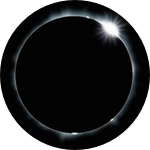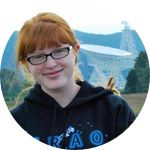About This Project
It has long been known that stars fuse hydrogen to produce the heavier elements, up to iron. When they die they explode as supernovae and produce most of the heaviest elements. I am proposing that elements can be made in other ways. I will be looking at black holes to observe the presence of the processes that create these elements. Understanding these processes will help scientists to better understand the history of the universe.
Ask the Scientists
Join The DiscussionWhat is the context of this research?
When massive stars die, they explode in supernovae. A lot of nuclear processes occur in supernovae, and a particularly important one is rapid neutron capture. It is important because it is responsible for more than half of the heavy elements found in the universe (Ming et al. 2013). Right now, scientists believe that supernovae are the only things in the universe that can create these heavy elements. Cameron (2001) suggests that other processes in space can create these heavy elements.
When supermassive black holes take in too much matter, they shoot that matter out in jets of particles at just fractions of the speed of light. We can see these jets when they collide with matter in space. It's here that we believe that rapid neutron capture might occur.
What is the significance of this project?
Because the only currently known natural mechanism that facilitates rapid neutron capture is core collapse supernovae, finding evidence of r-process in other phenomena would not only change our understanding of important nuclear processes, but would also help us to understand the history of the universe.
There is also debate surrounding gamma ray-emitting, radio-loud, narrow-line Seyfert 1 galaxies. It surrounds the fact that they have been shown to emit gamma rays, which is suggestive of relativistic jets being ejected from their black holes (Doi et al. 2004). However, these galaxies are thought to have black holes with too low a mass to emit relativistic jets. Measuring the black hole mass and observing visible light synchrotron radiation will help solve this mystery.
What are the goals of the project?
My goal from the funding provided for this project is to pay for time of the Vatican Advanced Technology Telescope. After the data have been analyzed, the results will be submitted for publication in the journal Astronomy and Astrophysics.
The main goal of this experiment is to determine if relativistic jets can produce heavy elements. I will look for the elements aluminum and nickel surrounding the shockwave of relativistic jets. If detected, this will imply that this element production may be occurring. we will do follow up observations with the Chandra x-ray Observatory.
Budget
We will be using the Vatican Advanced Technology Telescope in Arizona. 100% of this funding will be used to purchase observing time on this telescope to obtain the spectroscopic data. The Physics Department at Marshall University has already promised to fund my travel in support of this project.
Endorsed by
 Project Timeline
Project Timeline
We will be traveling to Arizona to make observations at the Vatican Advanced Technology Telescope (VATT) near the beginning of the Fall 2017 semester. We will have the analysis of our data complete by early January 2018. The paper(s) resulting from our findings will be submitted to the journal Astronomy and Astrophysics around March 2018. We will travel to the 232nd meeting of the American Astronomical Society in Denver, Colorado to present our findings from June 3rd-7th 2018.
Jul 31, 2017
Project Launched
Sep 28, 2017
Travel to Vatican Advanced Technology Telescope and make observations
Jan 08, 2018
Analyze all VATT data
Mar 01, 2018
Write and submit paper to Astronomy and Astrophysics
Jun 03, 2018
Travel to Denver, CO to present findings at the 232nd AAS meeting
Meet the Team
Rae Stanley
I am a 19 year old, female physics student at Marshall University in Huntington, West Virginia. I come from a coal mining family in rural Lincoln County, West Virginia. I have a passion for astronomy and mathematics. Specifically, I am most interested in planetary science and fluid dynamics. I have Ehlers-Danlos syndrome, a connective tissue disease, and I use my home bakery to raise money for the Ehlers-Danlos Society. In two years I will graduate from Marshall University with a bs in physics and a bs in biology. I hope to attend graduate school at the University of Colorado, Boulder to obtain a PhD in astrophysics. Afterwards, I hope to work for NASA's Jet Propulsion Laboratory in their planetary science division.
Project Backers
- 17Backers
- 15%Funded
- $750Total Donations
- $44.12Average Donation

